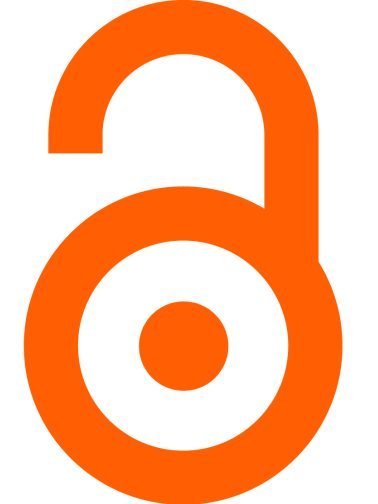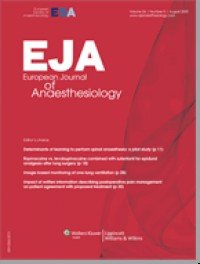European Journal of Anaesthesiology Q1
 Unclaimed
Unclaimed
The European Journal of Anaesthesiology (EJA) publishes original work of high scientific quality. Preference is given to experimental work or clinical observation in man, and to laboratory work of clinical relevance. The journal also publishes commissioned narrative reviews by an authority in a field of interest to those working in anaesthesiology, pain, emergency medicine or intensive care. Editorials, commissioned commentaries and book reviews also included. Published on behalf of the Europea It has an SJR impact factor of 0,987.
European Journal of Anaesthesiology focuses its scope in these topics and keywords: anaesthetic, postoperative, propofol, firstline, fibreoptic, endothelial, endoscopyeffects, emergency, elderly, doses, ...
Type: Journal
Type of Copyright: CC BY
Languages: English
Open Access Policy: Open Access
Type of publications:
Publication frecuency: -


3057 €
Inmediate OANPD
Embargoed OA- €
Non OAMetrics
0,987
SJR Impact factor88
H Index149
Total Docs (Last Year)626
Total Docs (3 years)4851
Total Refs1318
Total Cites (3 years)326
Citable Docs (3 years)2.06
Cites/Doc (2 years)32.56
Ref/DocOther journals with similar parameters
Leukemia Q1
Anaesthesia Q1
British Journal of Anaesthesia Q1
Pain Q1
Anesthesiology Q1
Compare this journals
Aims and Scope
Best articles by citations
Targeting oliguria reversal in perioperative restrictive fluid management does not influence the occurrence of renal dysfunction
View moreStatistical Methods for Anaesthesia and Intensive Care
View moreAnaesthetic strategies towards developments in day care surgery
View moreRapacuronium: clinical pharmacology
View moreRapacuronium: first experience in clinical practice
View morePostoperative adverse outcomes after major surgery in HIV-infected patients: a nationwide matched cohort study
View morePostoperative analgesia in children: comparison of bupivacaine with a mixture of bupivacaine and alfentanil
View more'Awareness' and 'recall' during emergence from general anaesthesia
View moreHorner's syndrome following low-dose epidural infusion for labour: a cautionary tale
View moreEvaluation of standard haemodynamic tests of autonomic function and HbA1c as predictors of delayed gastric emptying in patients with type 1 diabetes mellitus
View moreAntioxidant activity of propofol in blood from anaesthetized patients
View moreMuscle relaxants in paediatric day case surgery
View moreMuscle relaxants suitable for day case surgery
View moreEvaluating learning curves for intubation in a simulator setting
View moreAn imperforate nasogastric tube
View moreChoice of the hypnotic and the opioid for rapid-sequence induction
View moreA difficult intubation made more difficult
View moreA pharmacokinetic-dynamic explanation of the rapid onset-offset of rapacuronium
View moreCorrespondence
View moreProspective, randomized, controlled evaluation of the preventive effects of positive end-expiratory pressure on patient oxygenation during one-lung ventilation
View moreCorrespondence
View moreCorrespondence
View moreThe influence of several intravenous anaesthetics on the chemotaxis of human monocytes in vitro
View moreBook Review
View more
Comments